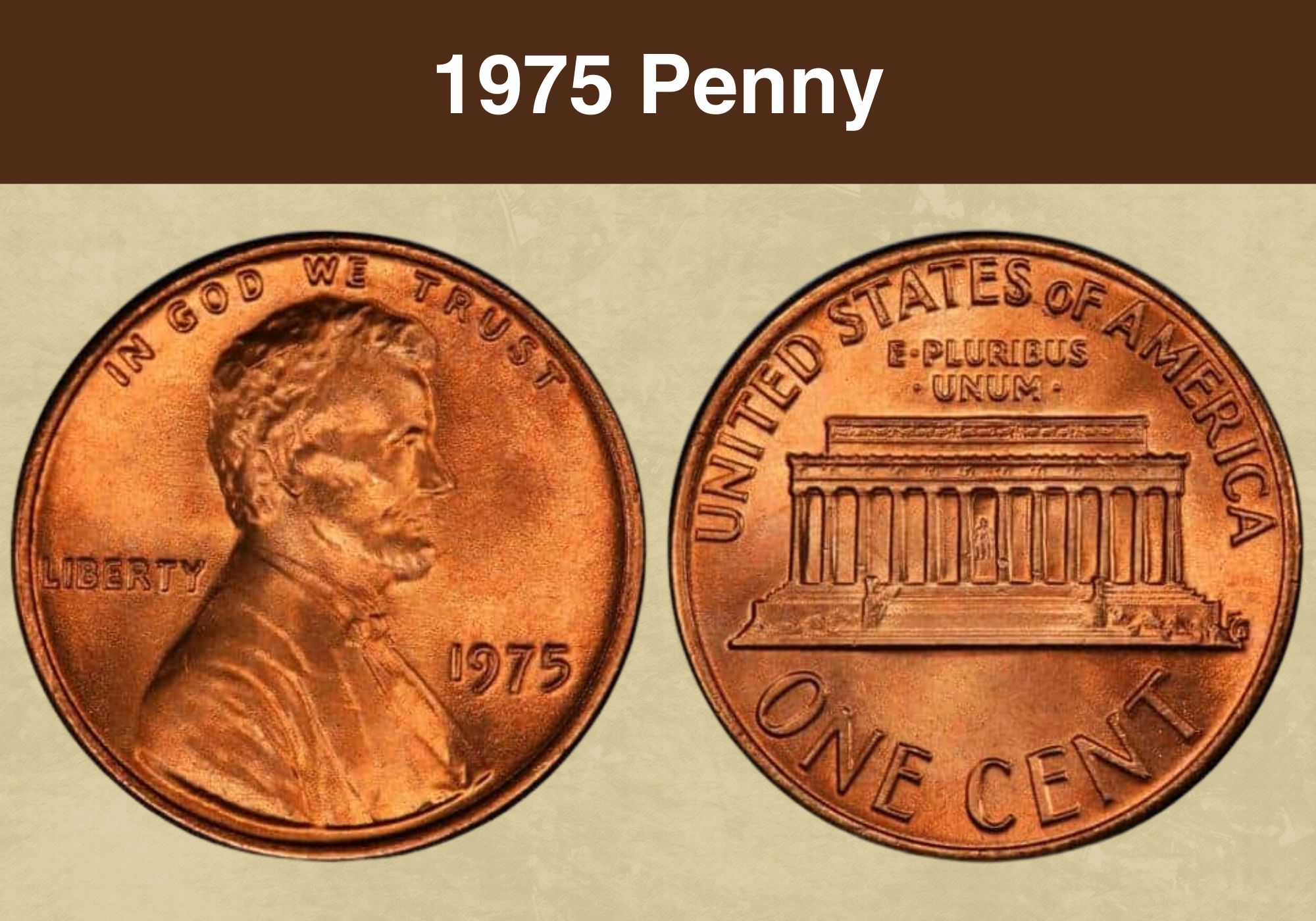
Coin Value Contents Table
In 1975, the larger denominations (Quarter, Half Dollar, and Dollar) were struck with two dates to mark America’s Bicentennial i.e. 200 years since independence. But the penny is a different matter. It launched in 1909 to mark 100 years since Lincoln’s birth. That means it has its own bicentennial celebration in 2009. For now, let’s look at the 1975 Penny Value.
1975 Penny Value Chart |
|||||
| Coin | MS 63 RD | MS 65 RD | MS 67+ RD | MS 68 RD | PR/PF 70 DCAM |
| 1975 No Mint Mark Penny | $3 | $16 | $650 | $10,500 | – |
| 1975-D Penny | $7 | $16 | $950 | $10,000 | – |
| 1975-S Proof Penny | – | – | – | – | $15,000 |
History of the 1975 Penny
The 1975 Penny was a Lincoln Memorial Penny. As we mentioned before, this coin was first struck to mark Lincoln’s 100th Anniversary. Then in 1959, the Mint wanted to commemorate 150 years since the great man’s birth aka his Sesquicentennial. So they redesigned the back of the coin and replaced the wheat stalks with a sculpture of the Lincoln Memorial building.
This design was used until 2008 then revamped with four reverse designs that marked his bicentennial. In numismatic terms, the reverse is the tails side while the obverse is the front or heads side. Also, numismatics is the study of coins, medals, and tokens. Experts in this area are called numismatists. Interestingly, a few aluminum pennies were struck in 1975.
The mint had experimented with aluminum before – back in 1942. At the time, they were looking for copper and nickel substitutes since both metals were needed for the War Effort. In 1975, the price of copper was starting to rise, pushing the melt value of pennies closer to their face value. This was a problem since pennies were the US Mint’s most profitable coin.
Aluminium Cents and the West Point Mint
Apart from the entry of aluminum cents, 1974 was also the first time pennies were minted at West Point. This practice continued in 1975 and didn’t stop until 1986. You wouldn’t know it though, since West Point coins had no mint mark and were often assumed to be Philadelphia coins. It’s only in 2019 that coins carried the W Mint Mark to honor 110 years of the penny.
Currently, we know of 66 aluminum pennies from 1975. About 10 exist from 1974, though the mint made close to 1.6M that year. The rest were allegedly destroyed when Congress shot down the idea of aluminum cents, but a few have popped up in private collections. The coins were mainly aluminum with some trace metals mixed in to harden and strengthen the cents.
By 1982, the mint had settled on a template of 97.5% zinc coated with a 2.5% copper to give the coin its trademark color. But even with this change, pennies are still making a loss today since they’re approaching 3c in production costs for one coin. And it can’t buy a thing! But it’s a classic denomination and the first presidential coin so the mint has no plans to stop.
Also read: 12 Most Valuable Lincoln Penny Worth Money
Features of the 1975 Penny
We’ve mentioned the obverse and reverse – let’s look at a few more technical terms. The thin side is called the edge, and while some coins have ridges called reeds, the penny is smooth or plain. The raised border is called a rim or collar. The words are called mottos or legends and the images are devices. The backdrop is called the field and coin blanks are called planchets.
The Obverse of the 1975 Penny
It shows Abraham Lincoln facing right. In God We Trust is above his head with Liberty on the left, behind his back. The mint date and mint mark are on the right, in front of his chest. On his shoulder cut-off, it says VDB, identifying the coin designer as Victor David Brenner.
The Reverse of the 1975 Penny
It shows the Lincoln Memorial building. Between the central pillars, you can see Lincoln’s statue sitting in the distance. The top of the coin says United States of America followed by E Pluribus Unum. The bottom says One Cent. The right corner says FG for Frank Gasparro.
Other Features of the 1975 Penny
Some coins were aluminum, but most were 95% copper with 5% zinc and/or tin. It was the fourth small penny, measuring 19.05mm across (0.75”) and weighing 3.11g. In general, 1c pieces are the most commonly collected coins since they’re so easily available for beginners.
Also read: 13 Most Valuable Wheat Penny Worth Money
1975 Penny Grading
Lincoln Cents have retained the same obverse design from the start, but they’ve had seven reverse designs so far. Being copper coins, they’re color graded according to the vividness of their tone. The highest level is RD for red, followed by RB for reddish-brown, and finally BN or BRN for brown – except steel pennies (1942 to 1944) and aluminum cents (1974 to 1975).
| # | Grade |
|---|---|
| 1 | Basal State-1 |
| 2 | Fair |
| 3 | Very Fair |
| 4, 5, 6 | Good |
| 7, 8, 10 | Very Good |
| 12, 15 | Fine |
| 20, 30 | Very Fine |
| 40 | Extremely Fine |
| 50 | About Uncirculated |
| 60 | Mint State |
| 65 | Mint State |
| 70 | Mint State |
Please check our grading guides to know your coin scale, It’s the necessary step to know the exact value of your coin.
Check out now: How to Grade Lincoln Wheat Penny?
1975 Penny Value Guides
While 1975 wasn’t a notable year for pennies, they got a lot of spill-over attention from folk interested in Bicentennial Coinage. People were jonesing for those 1976 coins (dated 1776 to 1976) so other denominations got looped into the excitement. But since the mint was focused on the commemoratives, 1975 coins were low quality, making high grades rare and valuable.
1975 No Mint Mark Penny Value
In 1975, the US Mint made 5,451,476,142 Pennies without mint marks. The coins comprised 3,874,182,000 from Philadelphia and 1,577,294,142 from West Point. An additional 66 coins were struck in aluminum though they were apparently destroyed. On 29th April 2018, an MS 68 RD sold for $9,000. PCGS has only seen four and estimates their 2023 value at $10,500.
1975-D Penny Value
In 1975, the Denver Mint made 4,505,275,300 Pennies with the D Mint Mark. On 21st March 2014, the sales record for an MS 67+ was set at $4,113. Since then, a total of 7 coins got the MS 67+ grade from PCGS, so their value estimate for July 2023 has dropped to $950. That said, PCGS has received a single MS 68 coin, so its approximate 2023 valuation is $10,000.
1975-S Proof Penny Value
Starting in 1971, proof coins were made in a slightly different style. Instead of acid pickling, the mint used computerized lasers to frost the hazy sections. The field still had a mirrored polish, and they did this by scrubbing the dies with horsehair brushes and burnishing the blanks in stainless steel balls before minting. 1975 was a big year for the San Francisco Mint.
It’s when this branch switched exclusively to proof coin production. In 1975, San Francisco made 2,845,450 Proof Pennies with the S Mint Mark. On 17th January 2022, an NGC-graded PF 69 RD Ultra Cameo sold on eBay for $250. NGC grades proof coins as PF while PCGS has PR instead. Also, an Ultra Cameo at NGC is the equivalent grade to a Deep Cameo at PCGS.
These are coins that show the strongest contrast between the frosted device and the mirrored field. But rarity plays a role in pricing too. Only two PF 69 RD UCAM coins are known while almost 2,000 have shown up as PR 69 DCAM. So a PR 69 DCAM was $1,150 in July 2022, estimated at $55 in July 2023. But the single PR 70 DCAM is worth $15,000 in July 2023.
Also read: 17 Most Valuable Indian Head Penny Worth Money
Rare 1975 Penny Error List
The most common mistake on a penny is a wrong planchet. This is when a 1c is struck on a blank intended for a different denomination … or vice versa (e.g. a penny on a nickel or a dime on a cent). Other mistakes include misalignment, multiple strikes, cud breaks, die clashes, die caps, and strike-throughs. Let’s look at common 1975 Penny Errors and prices.
1975-D Penny Struck Through Capped Die Cap
At the mint, blanks pass through the press using a conveyor belt system directed by feeder fingers. But sometimes, a blank gets stuck on the die so it blocks and weakens the imprint on the next coin. This is called a die cap or capped die, and it results in blurry coin designs on the lower side. In MS 62, an NGC-graded Capped Die Strike Through was sold for a cool $53.
1975-D Penny Obverse Die Cap Error
This is a more valuable version of the error above. On the previous coin, the front was blurry while the back was clear. On this coin, it’s the heads side that’s fine while the reverse is hazy. The die cap also cupped the coin when it pressed so it has a somewhat saucer-like dent on its heads side that curved out of the back. In MS 65 RB, this attention-grabbing error was $360.
1975-D Penny Major Die Break
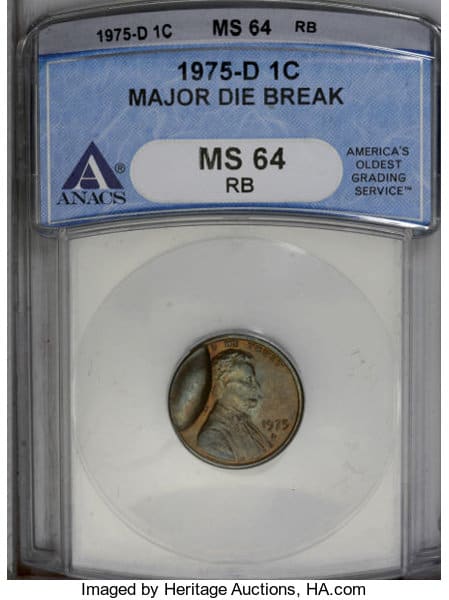
Every die makes thousands of coins – sometimes hundreds of thousands. But as it gets older, it starts to get cracks and gashes called cuds, and these are sometimes transferred onto the coin. These are called die breaks or cud errors, and they appear as bits of metal scooped out of the coin where the metal spilled out. In MS 64 RB, a major cud break could be worth $54.
1975-D Penny Double Strike Broadstruck Off-Centre
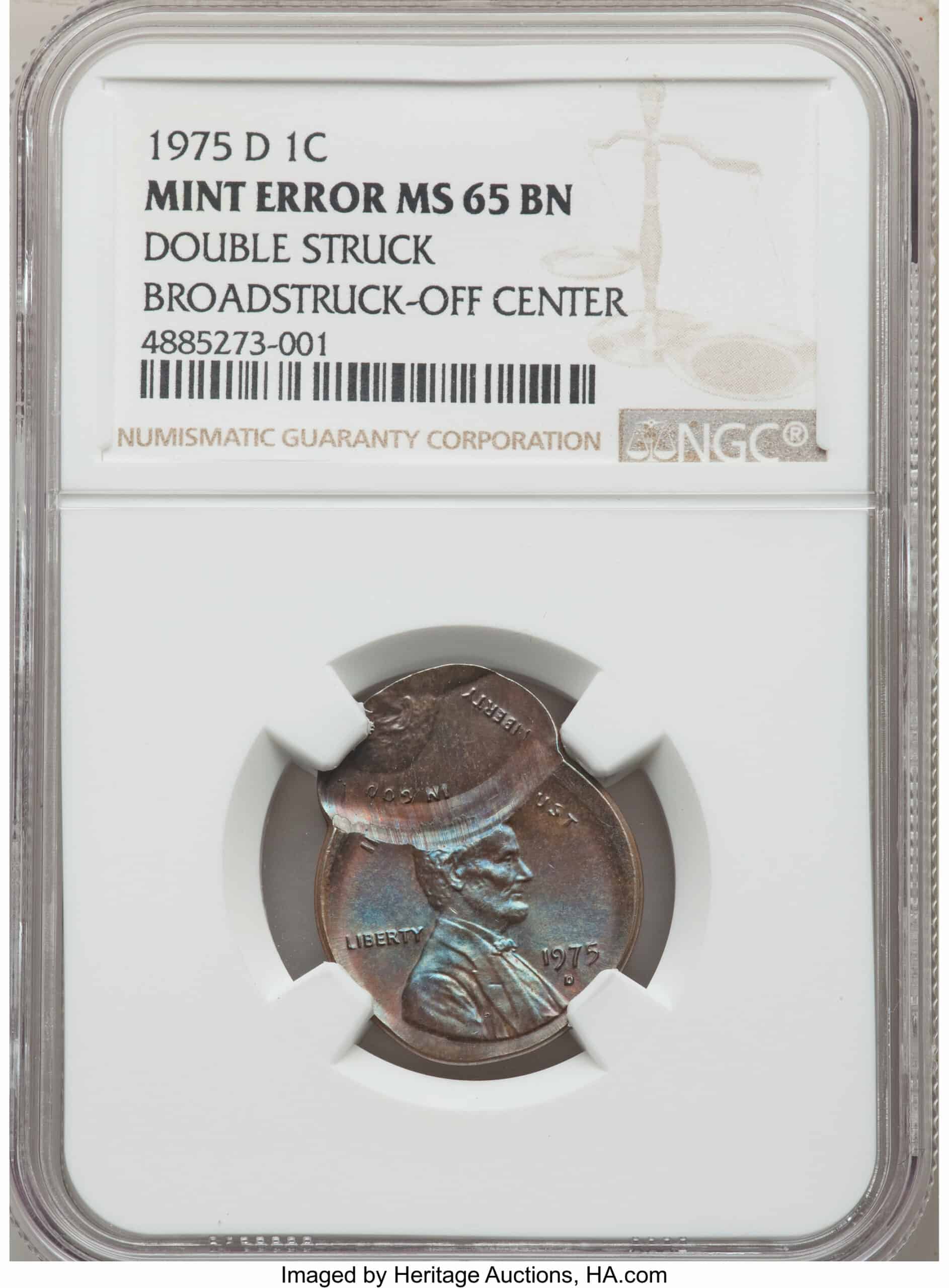
To ensure all the details got copied onto a coin, the blank was typically struck two or more times. If the blank slipped during the first strike, you got a misalignment that left part of the planchet empty. But if it was the second or third strike, you might get overlapping images or deformed coins. In MS 62, an 80% off-center was $60. An MS 65 BN broadstrike was $168.
1975-D Penny Triple Struck Error
As we’ve mentioned, an off-center error with 5% empty areas could go for $51. Similarly, a small die break can be $35 to $50. As for multi-strike errors, the size and severity can play a role. This MS 63 RN example has three distinct overlaps from the lower right to the upper left. The top strike-thru landed upside down so it’s a dramatic flaw. The error sold for $188.
1975 Penny Fold-Over Error
The die hits the coin with a lot of force. So if the planchet doesn’t land flat when it enters the press, it may get mashed and be folded in half aka a fold-over error. The result is a partially printed coin shaped like a half circle. Some parts of the design may be sliced off. A sample certified genuine or authentic by NGC sold for $575 while an MS 65 RB was sold for $1,495.
1975 Penny Struck on a Dime Planchet
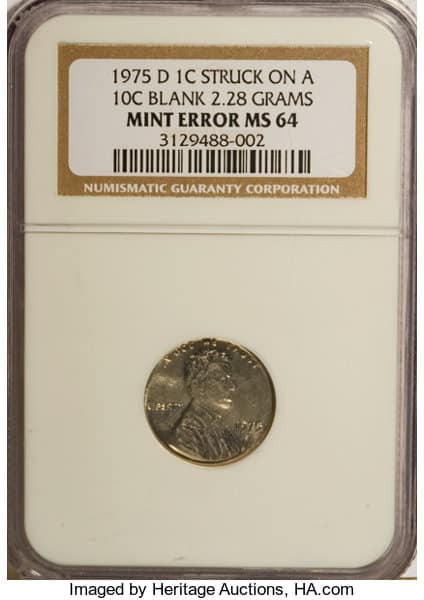
We hinted at wrong planchet errors where the diameter, weight, and metal content of the 1c are a clear giveaway. This penny was struck on a 10c planchet, so it has the tell-tale silver coloring with some of the words sliced off because pennies are 19.05mm while dimes are 17.91mm in diameter. A 2.3g graded MS 61 was $305 while a 2.5g graded MS 65 was $900.
1975 Penny Strike Thru Detached Lamination
Coins typically have layers of different metals, and when these layers separate while the coin is minting, it’s called a lamination error. Also, coins that have more than one mint mistake are worth a lot more. This penny has a detached layer that slipped onto the coin below, blocking the blank, causing an overstrike, and marring the design. In MS 62 BN, it’s $161.
1975 Penny Double Denomination Error
When a coin is struck on the wrong blank, that’s a wrong planchet error. But what if the design is on a coin that’s already stamped? That’s a double denomination error since the coin now has the details of two different currency pieces. In this case, it’s a 1975 Penny and a 1975 Roosevelt Dime. You can clearly see the two presidents. In MS 66, it was around $978.
1975-D Penny Mated Pair Error
A mated pair or bonded pair is when two error coins are sold together. It could be a capped die pair that has the coin above (which got stuck on the die) and the one below it (which got blocked by the blank cap). Or it could be two off-center coins with coupling overlaps. This pair matches that description in MS 62 BN and MS 64 RB. Together, they’re worth $750.
1975 Penny DDO and DDR Errors
DDO/DDR means doubled die obverse/reverse aka hub doubling. That’s when a die slips between hub strikes so the second imprint lands slightly to the left or right. This double-vision effect gets copied onto every coin that die makes. Since they’re not a First Strike (FS) i.e. they weren’t spotted within 30 days of release, they’re cheap. MS 65 is only $15 to $30.
1975-D Penny RPM Error
These days, all coin details are digitally imprinted in one strike. But in the old days, someone had to manually add the mint mark to the master hub. It was the final placement, leading to mistakes like re-punched mint marks. That’s when the second strike landed on a slightly different spot so you could see the earlier one below. They’re worth about $50 in MS 65.
Also read: 11 Most Valuable Wheat Penny Errors
Where to Sell Your 1975 Penny?
Now that you know the value of your coins, do you know where to sell those coins online easily? Don’t worry, I’ve compiled a list of these sites, including their introduction, pros, and cons.
Check out now: Best Places To Sell Coins Online (Pros & Cons)
1975 Penny FAQ
How Much is a 1975 Penny Worth Today?
In 1975, pennies minted in Philadelphia and West Point didn’t have mint marks. They were all business strikes or regular strikes, meaning they were intended for everyday transactions. The highest auction price for an MS 68 RD was $9,000 set on 29th April 2018. But according to PCGS, it’s worth $10,500 in July 2023 since they’ve only received four coins in that grade.
How Much is a Rare 1975-D Penny Worth?
The sales record for a 1975-D Penny graded MS 67+ RD is $4,113 set on 21st March 2014. But today, PCGS has received 7 in that grade so their value in July 2023 is down to $950. Since they’ve only seen one MS 68 and it hasn’t sold yet, its value estimate in July 2023 is $10,000.

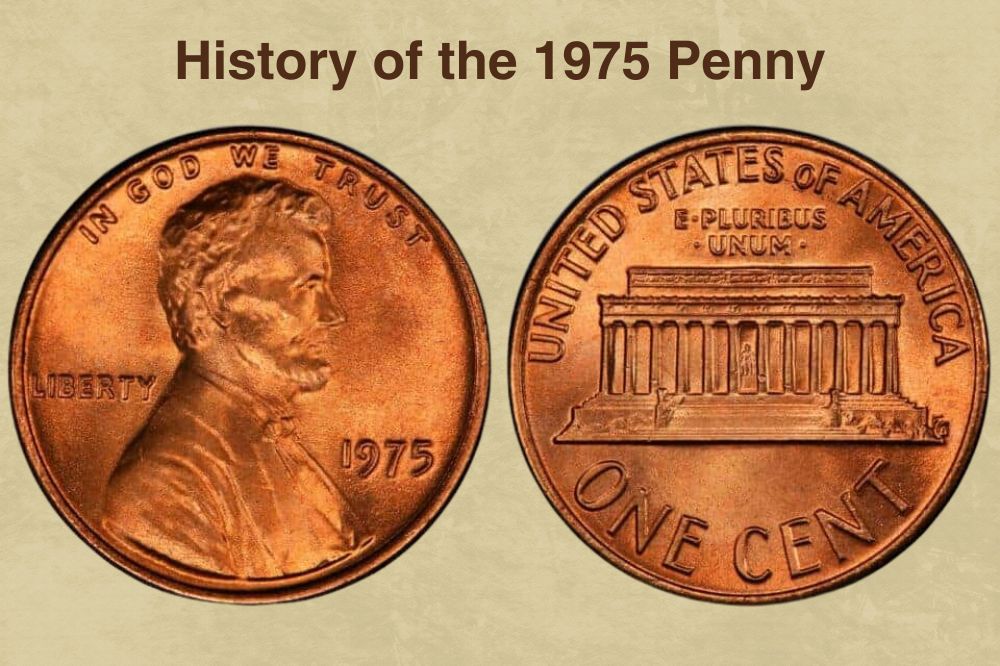
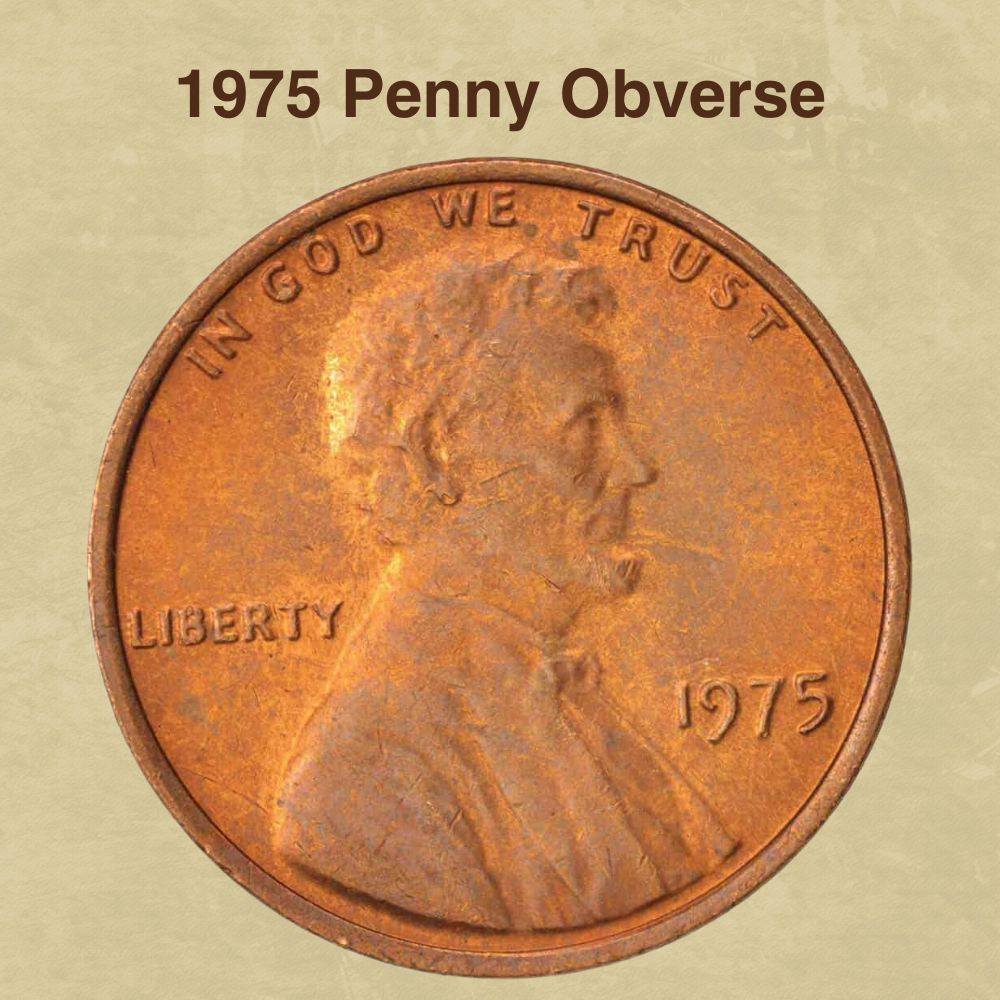
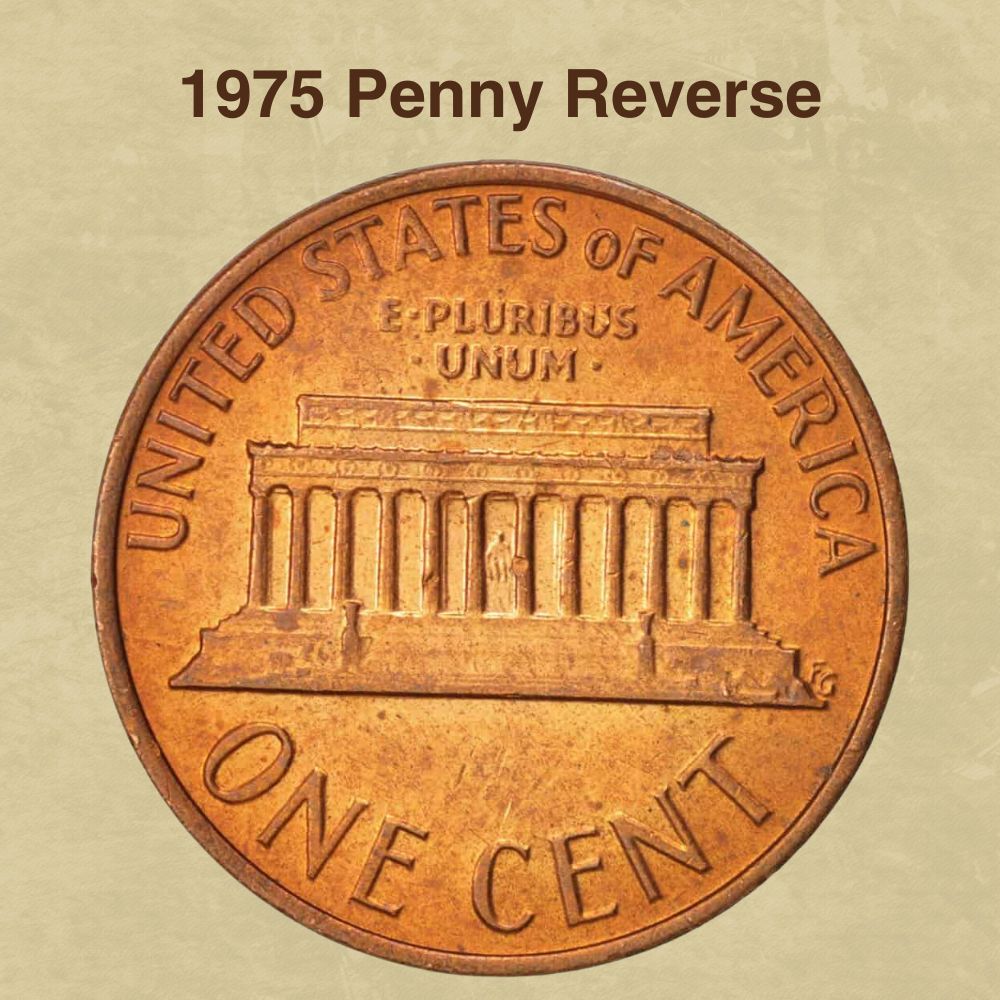
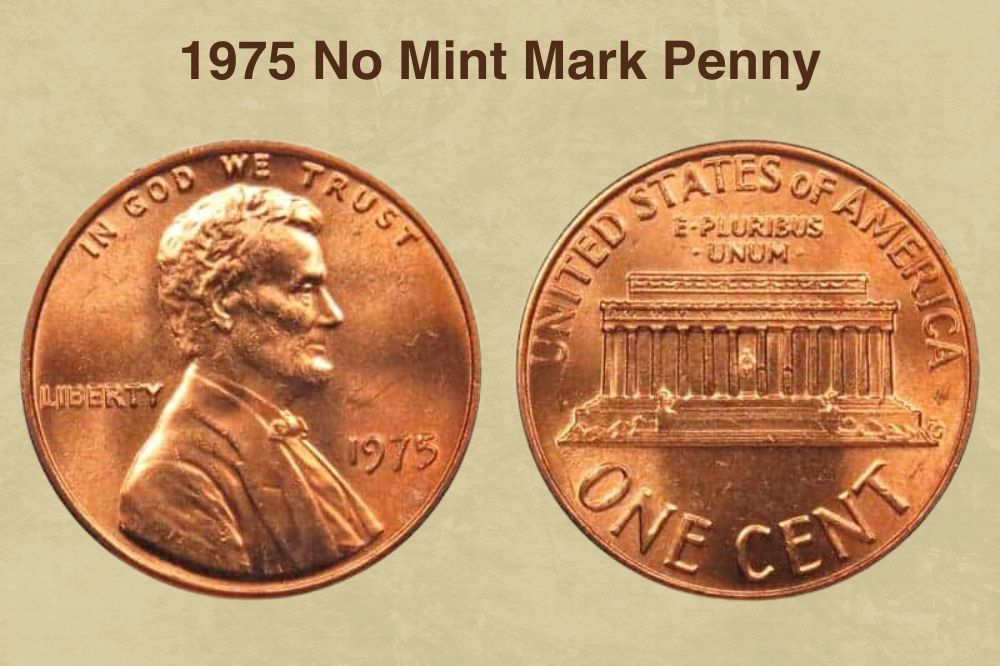
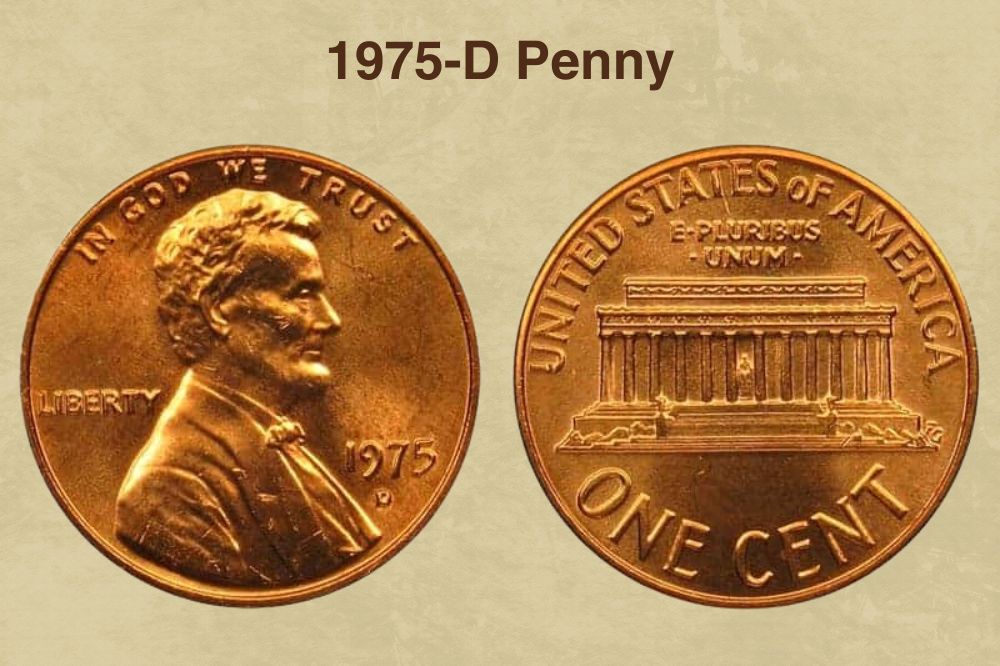
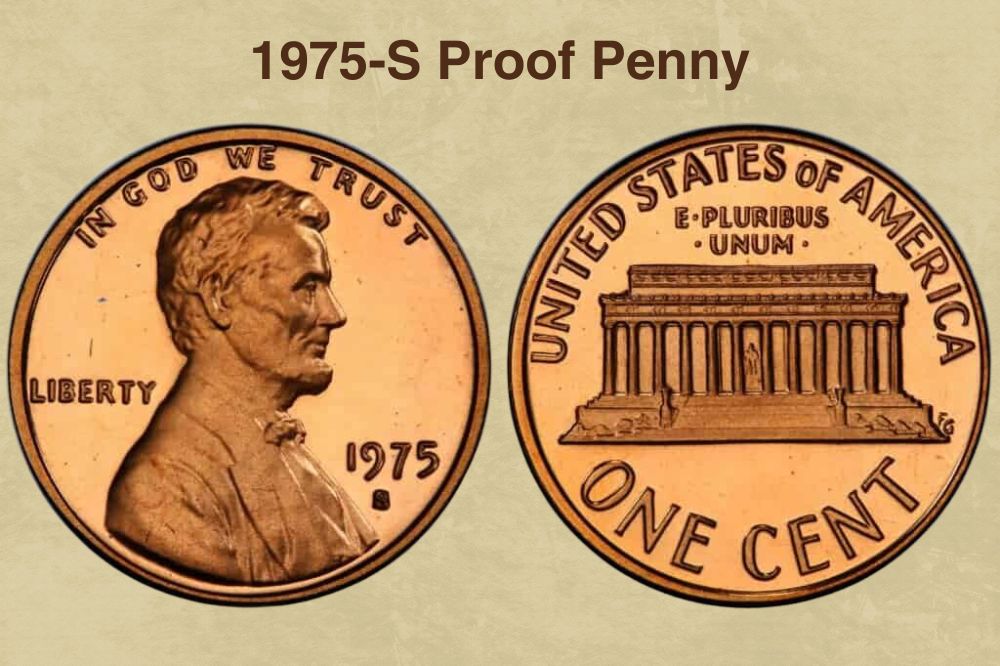
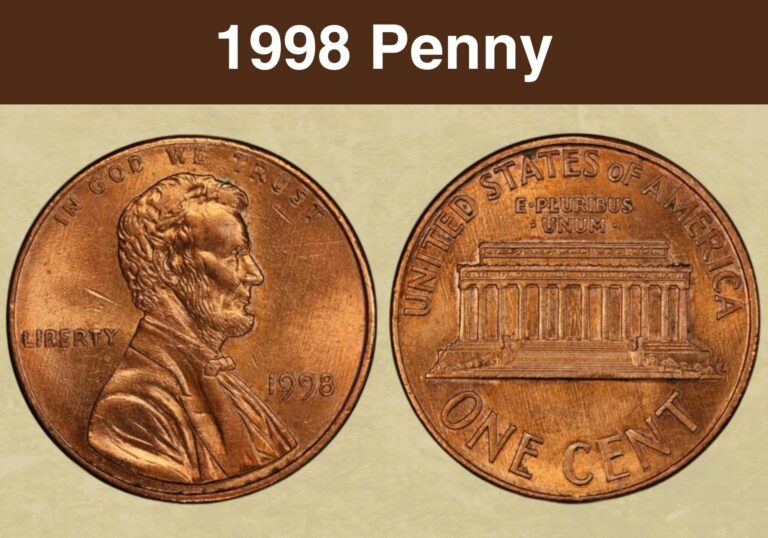
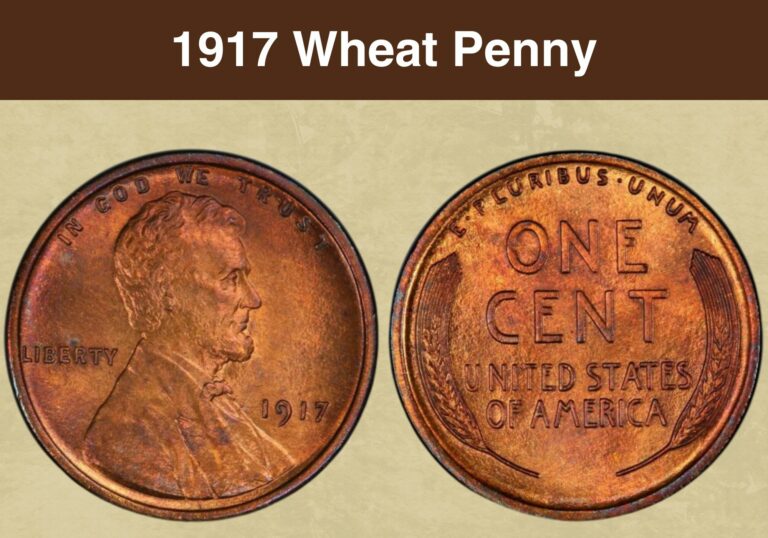
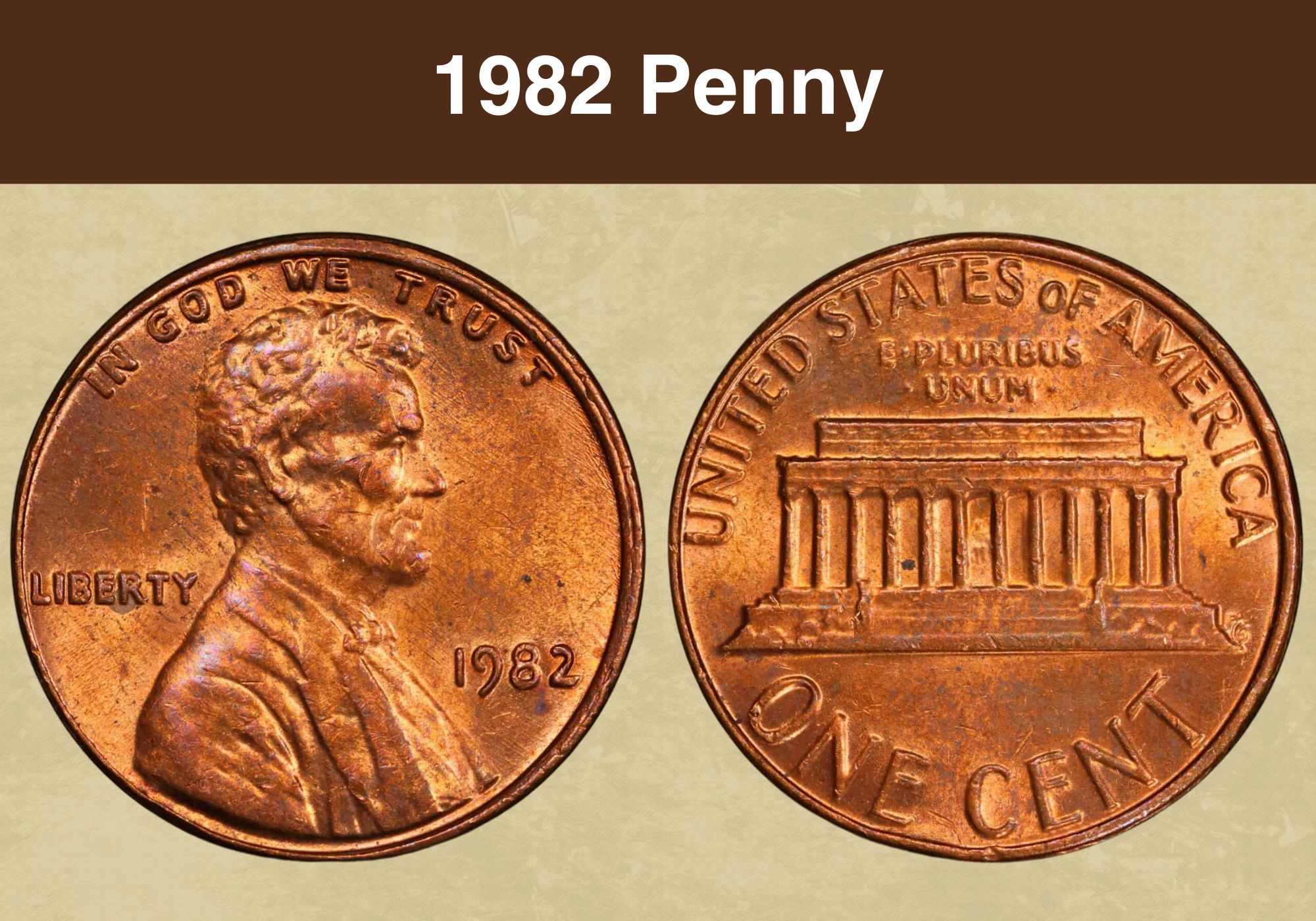
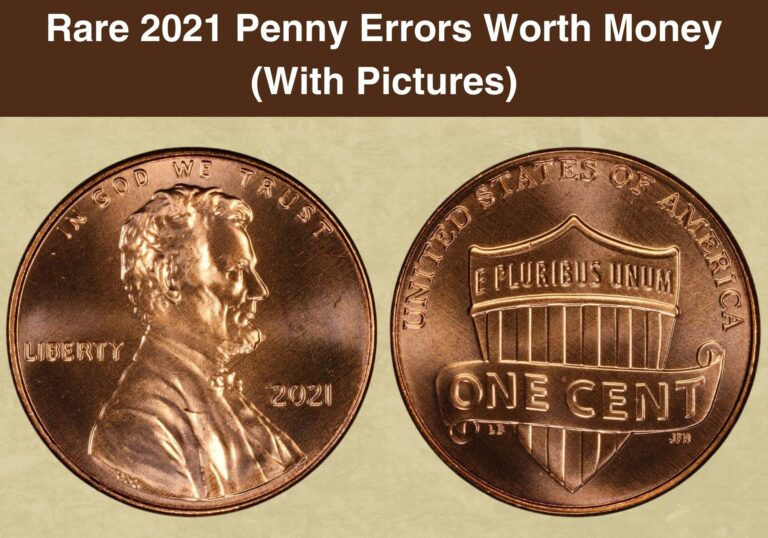
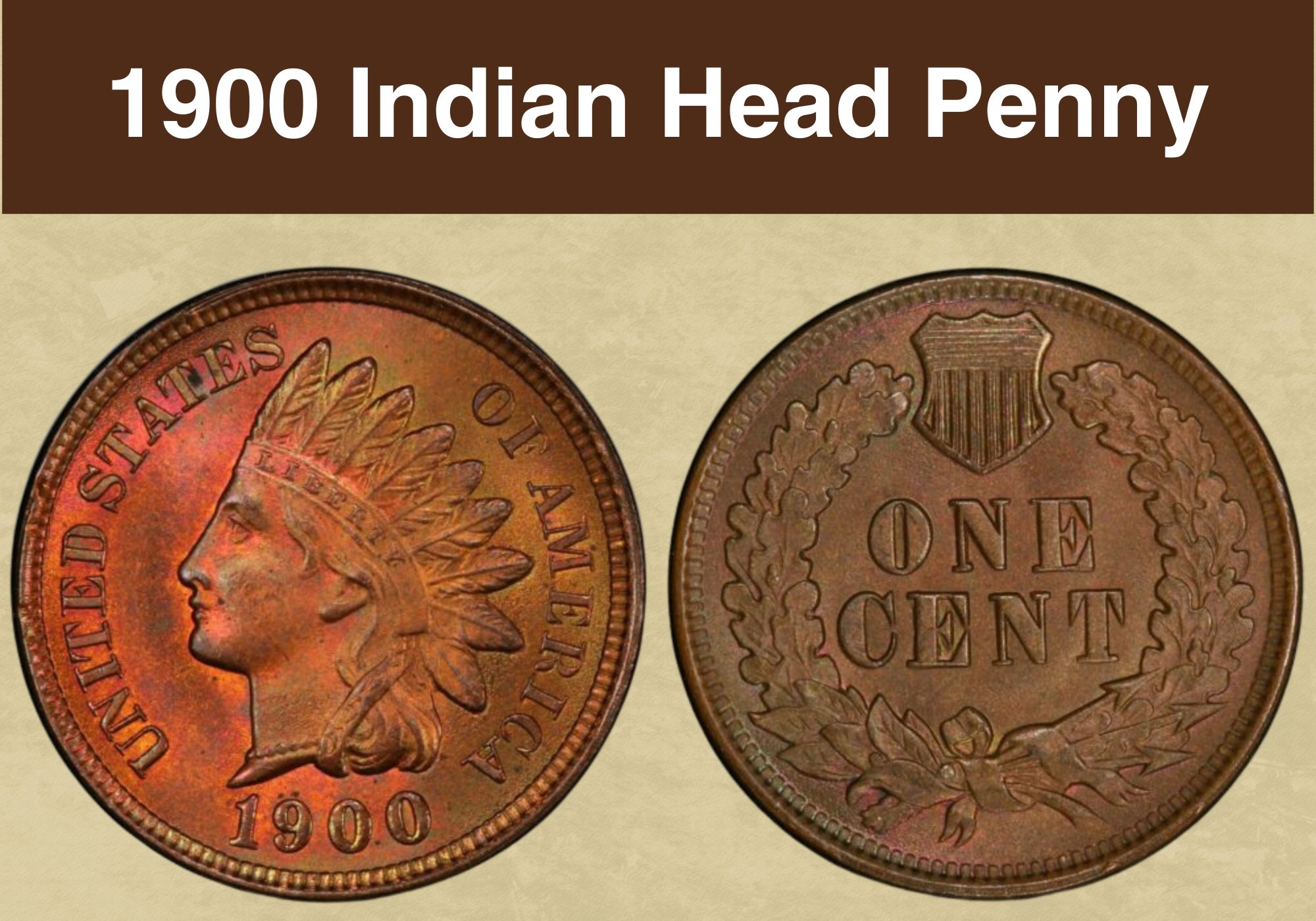
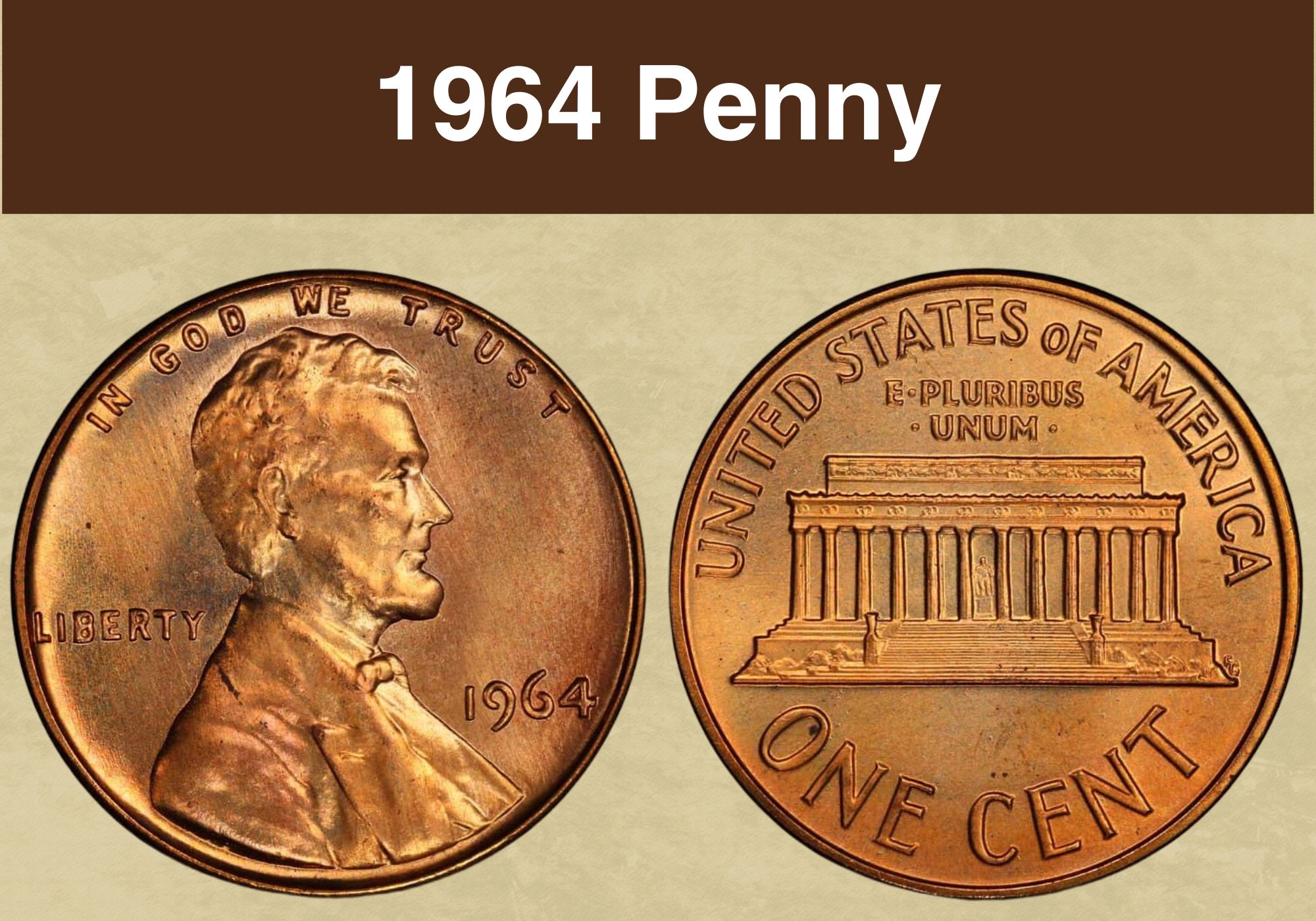
I have a 1975 D double headed lincoln penny. Head on both sides. Can’t find anything about it